Category: General

Rivian recalling over 17,000 EVs due to headlight failure
Rivian is recalling 17,260 electric vehicles from model year 2025—including both the R1T pickup truck and R1S SUV—because their headlight low beams may fail to illuminate when the vehicles are started in cold weather.
Between Apr. 29, 2024, and Feb. 03, 2025, Rivian built 2025-model-year vehicles with “incorrectly configured headlamps,” that used the wrong parts from a supplier, according to the NHTSA. Any fault that prevents headlights from illuminating violates Federal Motor Vehicle Safety Standard (FMVSS) number 108, triggering a recall.
Should drivers not notice that their headlights aren’t working, they’ll also see a dashboard warning message saying “Low beam lights not working. Service low beams soon,” according to the NHTSA. Ignoring that warning and driving in reduced-visibility conditions increases the risk of a crash.
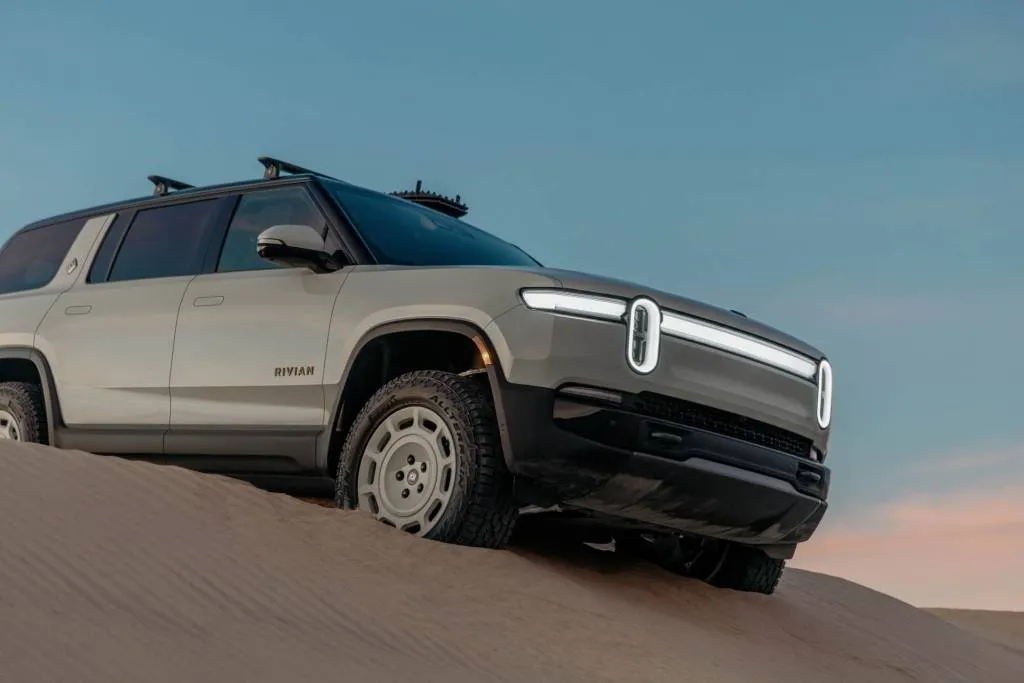
2025 Rivian R1S California Dune Edition
Rivian told the NHTSA that it is not aware of any crashes related to this issue, though. Nor is the automaker aware of any related injuries.
To address this issue, Rivian will replace the headlight control modules on affected vehicles free of charge. This will be done at the company’s service centers, as Rivian does not sell vehicles through franchised dealerships.
Rivian plans to notify owners of the recall by mail starting Mar. 28. Owners can also call the automaker’s customer service department at 1-888-748-4261 for more information. Rivian’s reference number for this recall is FSAM-1612.
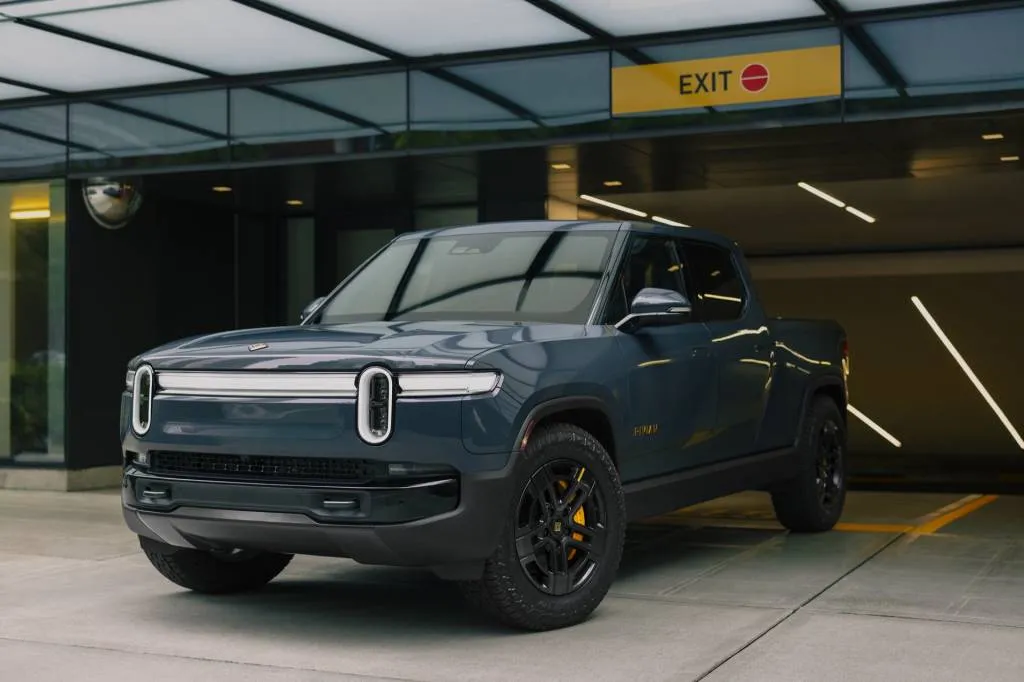
2025 Rivian R1T
The 2025 models included in this recall mark the most substantial revamp of the R1 family since its launch. While they may not look different, nearly all of the components and technology details within them have been changed for the better. That includes proliferation of Rivian’s in-house-designed drive units throughout the lineup, along with heat pumps, and LFP battery cells for the base Standard Pack.
Rivian also rolled out active-matrix headlights with adaptive low beams, although it’s unclear if their functionality is related to this recall. It’s also tried to patent heated headlight lenses that could be used on future EVs.

BMW switches motors in upcoming EVs, watches watts with Energy Master
BMW on Thursday released further details about the tech going into its next-generation Neue Klasse electric vehicles, including new nuggets on motors and energy management.
The automaker will employ what it calls the Energy Master, a central control unit mounted on the battery pack that manages both low- and high-voltage electricity flow, controlling everything from the power supply for the motor (or motors) to onboard systems running on low voltage. Its hardware and software was developed completely in-house, BMW claims, adding that the unit will be over-the-air updatable like other vehicle systems.
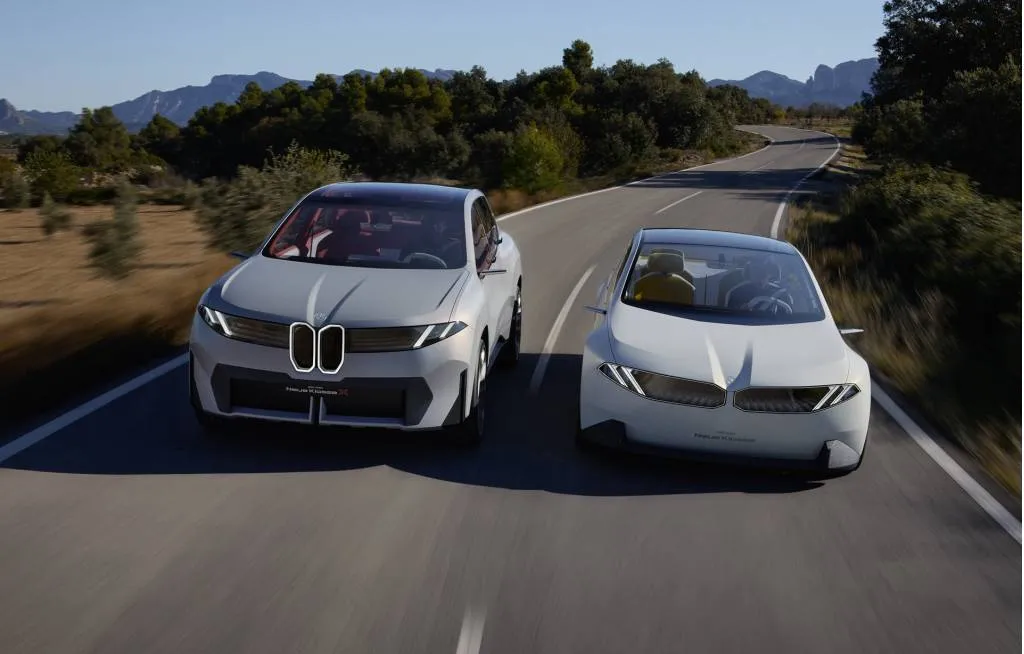
BMW Vision Neue Klasse X concept
BMW also confirmed that it will use more compact, cost-efficient induction motors at the front wheels. That’s an about-face versus in the i4, i5, i7, and iX, which use special current-excited synchronous motors, or electrically excited synchronous motors (EESM), as BMW calls them. BMW is sticking with the EESM design for the rear wheels.
As BMW has noted multiple times in the past, the Neue Klasse will be built on an 800-volt platform, with a 30% boost in range and 30% faster charging. And this new family of EVs will switch to cylindrical batteries with a 20% boost in energy density, installed directly into the pack, which will itself reinforce the body structure.
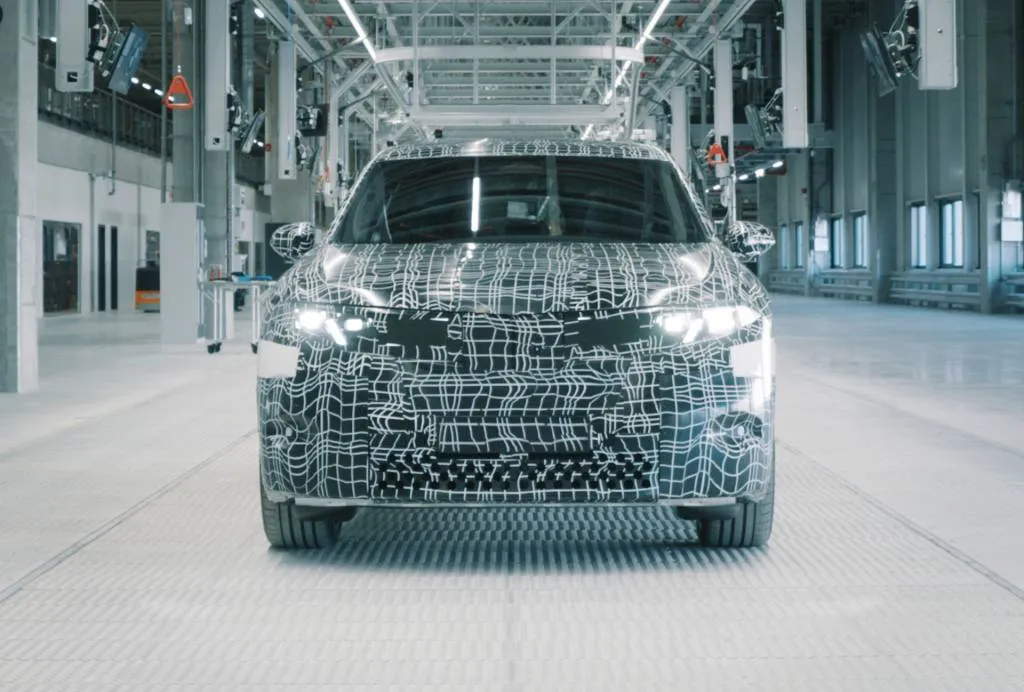
Pre-production example of first BMW Neue Klasse electric vehicle at plant in Hungary
BMW has taken years to tease out all the technical changes that are due for these EVs, yet there remain technical details it hasn’t covered in releases. When it announced the switching of battery formats in 2022, BMW said that it might be able to cut battery costs by 50% by using LFP chemistry in some models; but it still hasn’t yet specified which Neue Klasse models might use that.
These models also don’t have official names or confirmed alphanumeric badging. Previewed by sedan and SUV concepts in 2023 and 2024, respectively, the Neue Klasse has been in pre-production since November, according to BMW. But that first Neue Klasse EV, now being built in Hungary, hasn’t yet been fully revealed either. For the U.S., vehicles are poised to be sourced from Mexico.

2025 Volvo EX90 recalled for headlight issue
The 2025 Volvo EX90 electric SUV is now undergoing its first recall, but it’s one that won’t require a dealership visit.
Volvo is recalling a relatively small number of 2025 EX90 SUVs–just 2,061—because a software issue could impair headlight operation, reducing visibility and increasing the risk of a crash.
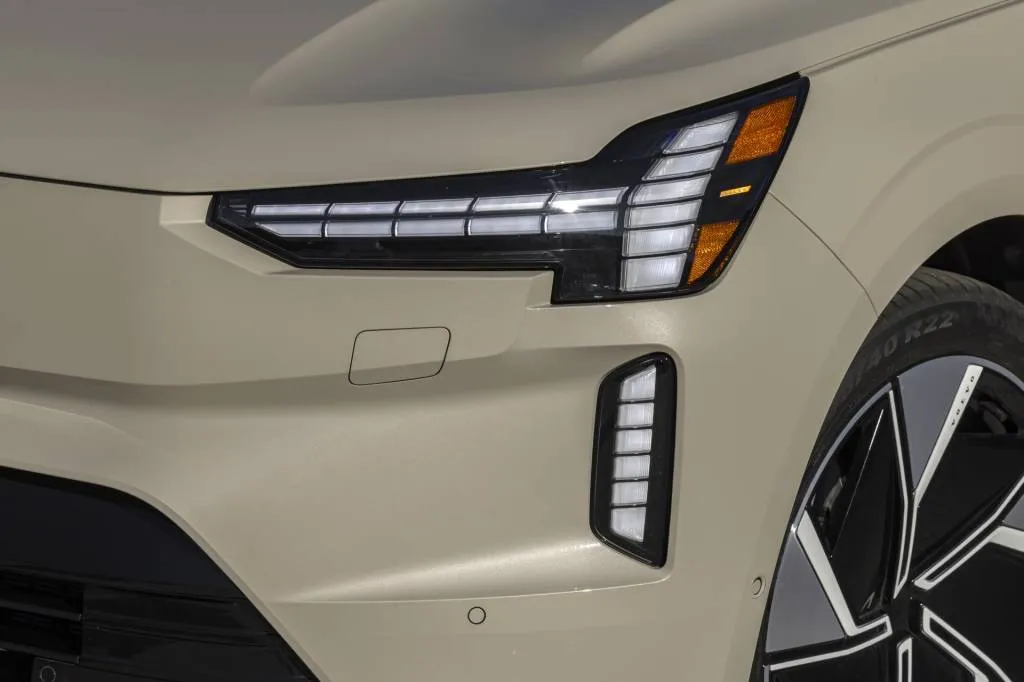
2025 Volvo EX90
The EX90 has shutters that open to reveal the headlights. The lighting elements seen when the headlights are not in use are actually daytime running lights. Incorrect software could send a signal to the headlights to perform a “reference run” while driving, causing the shutters to close over the low beam or high beam elements, according to the NHTSA.
If this erroneous signal, which originates in the onboard low power control (LPC) unit, is sent, drivers may see a message on the dashboard in addition to experiencing reduced illumination of the road ahead.
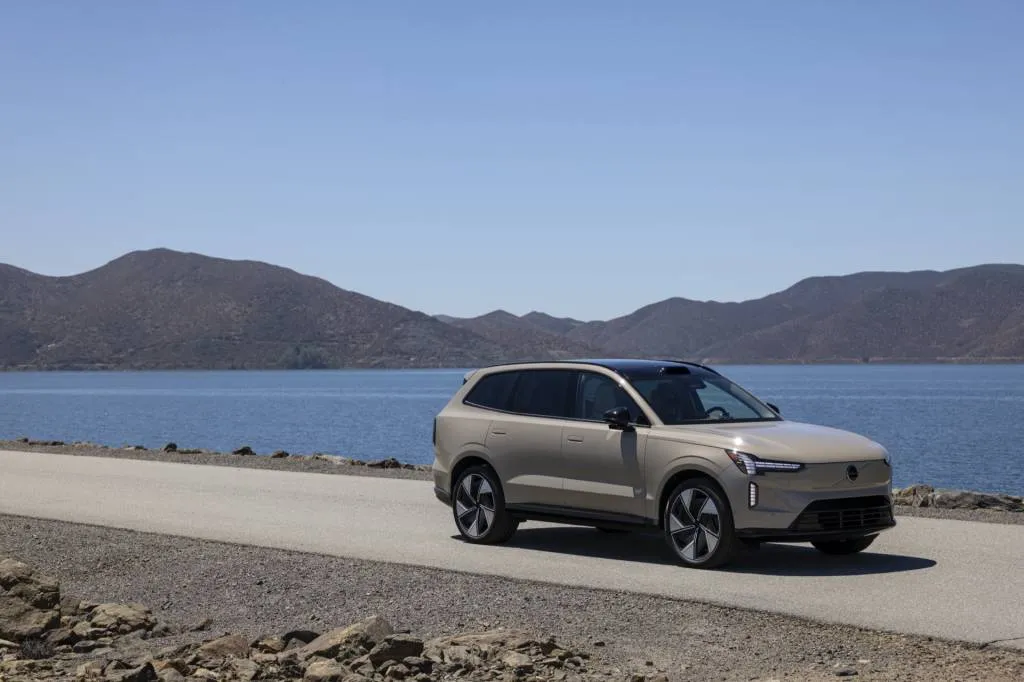
2025 Volvo EX90
For the most part, these vehicles are already fixed. Volvo has determined that this software error is limited to vehicles made from the start of production until Jan. 31, 2025. Newer vehicles received updated software, which also was already pushed to the recalled vehicles in an over-the-air (OTA) update beginning Feb. 11, according to filed recall documents. Customers can still have the update performed at a dealership if they want, though, and it will be free of charge in either case.
Owners will be notified by mail after the fact, starting Apr. 3, and can also call Volvo’s customer service department at 800-458-1552 for more information. Volvo’s reference number for this recall is R10298.
Such issues—and resolutions—are part and parcel with the EX90, the first Volvo truly designed as a software-defined vehicle. While we generally liked the way the finished product drove, that future got off to a rocky start thanks to a delay and some issues at launch. The EX90 arrived without certain software-based features, as well as a battery-drain issue Volvo promised to fix with an OTA update.

Mercedes-Benz confirms electric E-Class, C-Class, and GLC-Class by 2027
- The 2026 CLA-Class will be offered as a full battery electric vehicle and a mild-hybrid
- New electric models differ from the EQ series due to platforms that can accommodate a range of powertrains
- AMG performance division will also debut its first series of electric vehicles
Mercedes-Benz will launch all-electric versions of three of its most popular models within the next two years.
During a presentation of its 2024 financial results Thursday, the automaker said the C-Class and E-Class sedans, as well as the GLC-Class crossover, would get all-electric derivatives as part of a new-product push that will see “dozens” of new or refreshed models launch globally by 2027.
That rollout starts later this year with the 2026 Mercedes-Benz CLA-Class compact, which will be offered with all-electric and 48-volt mild-hybrid powertrains. The CLA EV is slated to debut numerous improvements over current-generation Mercedes EVs, including an 800-volt electrical architecture and a more clever regenerative braking system.
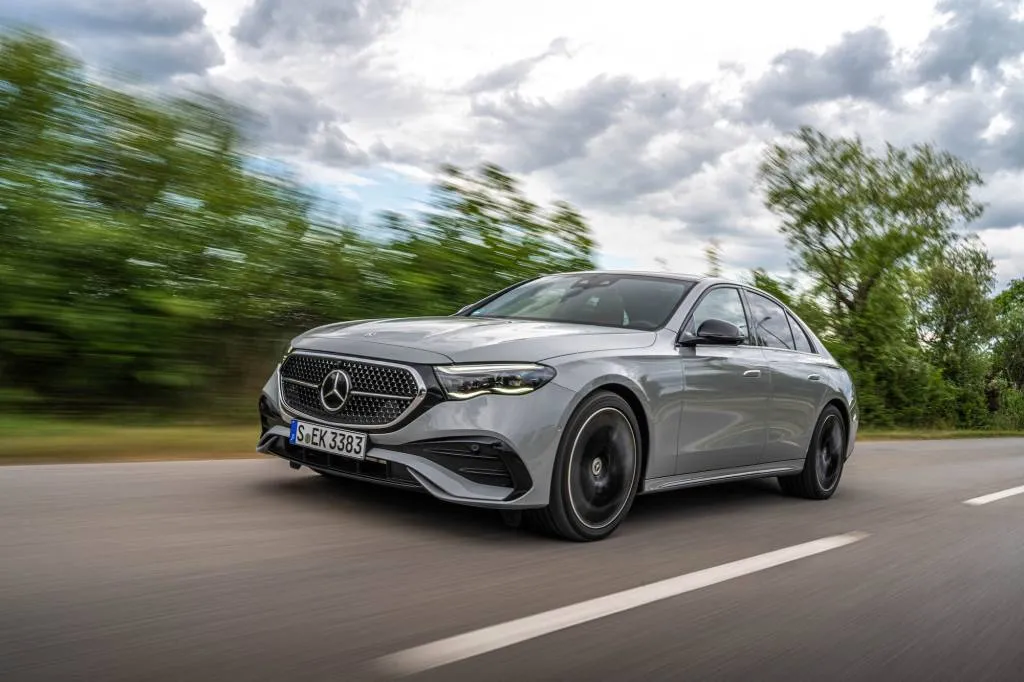
2025 Mercedes-Benz E-Class
Those improvements will be shared with other compact models based on the new CLA’s Mercedes-Benz Modular Architecture (MMA). They’ll likely be among the other models debuting over the next couple years, adding different body styles alongside the CLA, which is expected to remain a coupe-like sedan similar to the current generation.
While Mercedes’ current strategy centers on dedicated electric models (the EQB compact crossover being a notable exception), the CLA EV marks a shift toward offering the same vehicle with multiple powertrains—one that appears to be accelerating with the forthcoming C-Class, E-Class, and GLC-Class EVs.
Mercedes also promised “a string of launches” for its AMG performance division that will include the first EVs based on the new AMG.EA dedicated architecture. The first of these performance EVs, a fastback sedan that could replace the current AMG GT 4-Door Coupe, is scheduled to arrive this year, with an AMG electric SUV following sometime after that.
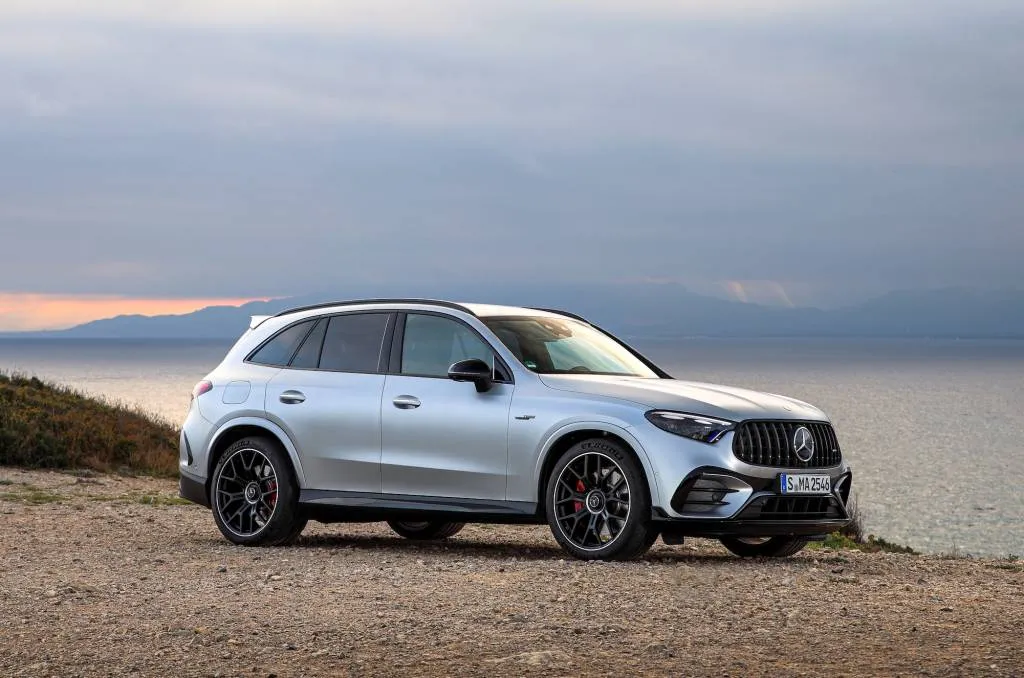
2025 Mercedes-Benz GLC Class
And the first of Mercedes’ next-generation electric vans is scheduled to launch in 2026. They’ll be based on yet another new platform, dubbed Van.EA. Mercedes recently reversed course and said it would also develop new combustion vans based on a companion platform as well.
Not all of Mercedes’ new and refreshed models will be electric, though. The automaker also confirmed a substantial update for its flagship S-Class sedan for next year, but didn’t mention an electric version. And last year the automaker delayed an EV sales target that would have seen it go all-electric (in at least some markets) by 2030, saying internal-combustion engines would stick around well into the next decade.

Kia PV5 electric van debuts in passenger and cargo guise
Kia on Wednesday previewed the exterior design of its PV5 electric van that’s expected to start production later this year.
The automaker showed basic passenger and cargo versions of the PV5, with other versions as well as conversion possibilities to be detailed at the 2025 Kia EV Day event in Tarragona, Spain, on Feb. 24. Kia also plans the full reveal of its EV4 sedan and hatchback at that event.
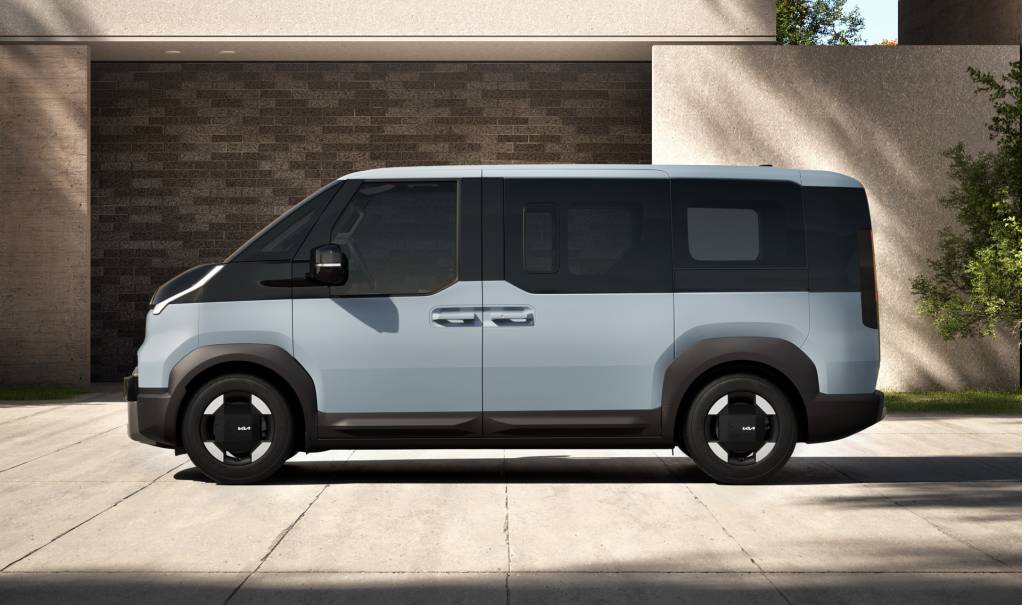
Kia PV5
The midsize PV5 is one of several flexible electric vans designed for various commercial applications that Kia calls its Platform Beyond Vehicles (PBV). They were previewed by concepts at the 2024 Consumer Electronics Show (CES), and much of the styling of those concepts seems to have carried over to the production PV5 variants.
Both the passenger and cargo versions of the PV5 feature the same distinctive headlights and cab-forward profile as the concepts, plus angular wheel arches with a bit of SUV-like cladding. Kia is saving the interiors for next week’s EV Day, where it will also discuss other potential versions, perhaps including a production version of the PV5 WKNDR camper van concept shown at the 2024 SEMA show.
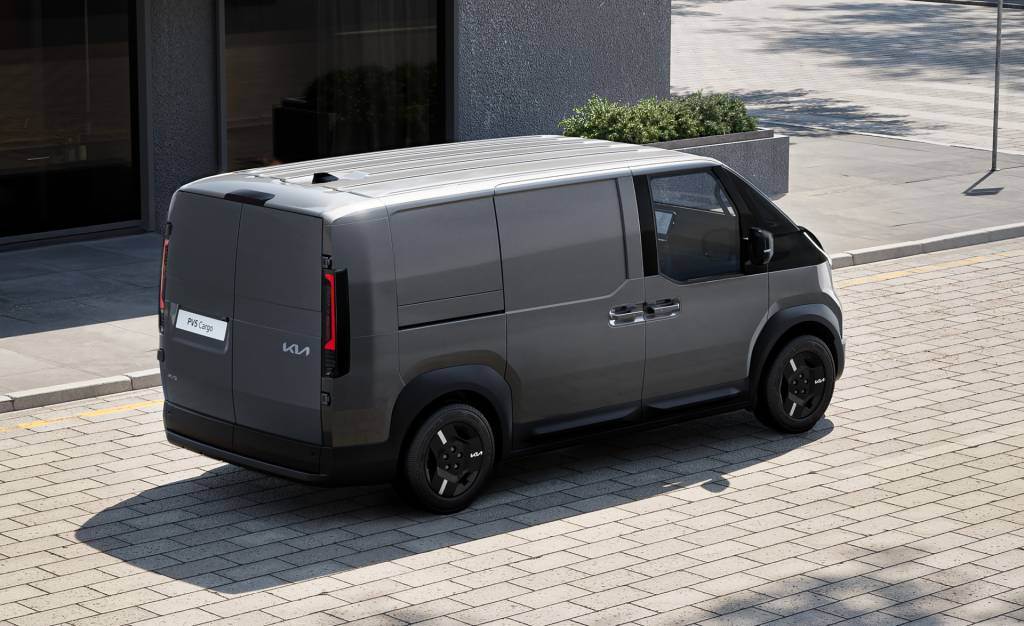
Kia PV5
If the engineering hews as closely to the concepts as the design, the PV5 will differ significantly from current EVs. There was no mention of a skateboard platform when the concepts were revealed, but instead interchangeable upper bodies, secured to the chassis via magnetic couplings, that allow the same vehicle to serve different roles.
Kia has set up a dedicated factory for its PBV business that’s due to start production in South Korea later this year, and has confirmed a market launch for that country and Europe. Last November, Kia America vice president for marketing Russell Wager told Green Car Reports that the automaker was still evaluating the PV5 for the U.S.

Mercedes plots new ICE vans, reverses course on electric-only
Mercedes-Benz has said up until now that its future vans would be based on a dedicated electric architecture, but on Thursday it confirmed plans for a new internal-combustion van architecture as well.
Electric vans based on the new Van.EA platform will still debut in 2026, as previously discussed. They’ll now be joined by other fuel-burning models based on a “second variant of the architecture” called Van.CA, for Combustion Architecture, Mercedes said in a press release.
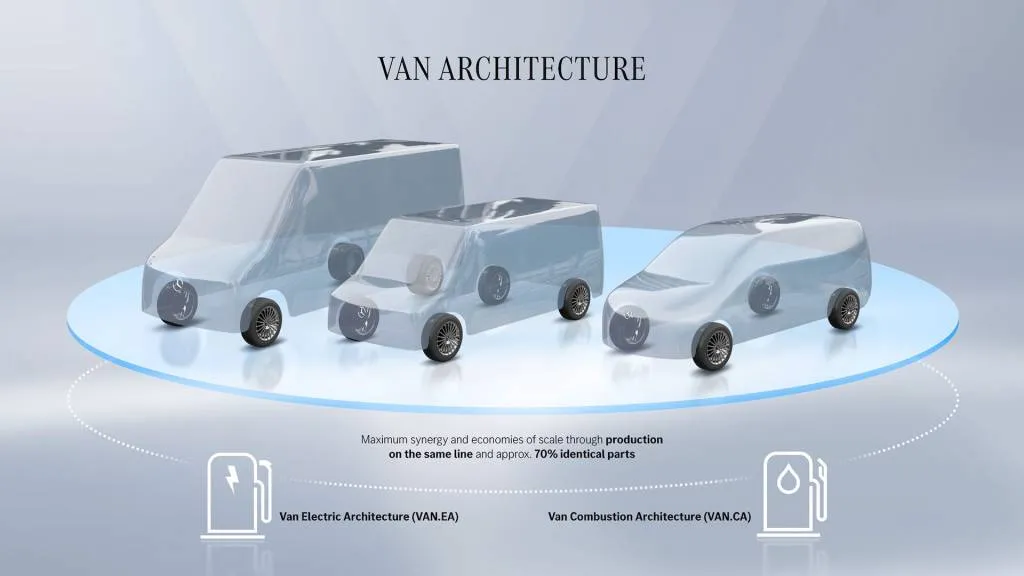
Mercedes-Benz van architectures
Combustion and electric vans will share 70% of parts, according to Mercedes, and will be produced on the same assembly lines. That commonality will help the automaker achieve economies of scale and allow more flexibility as demand for a given powertrain type ebbs and flows. Currently, Mercedes offers both gasoline and diesel vans in the U.S., as well as in Europe and other markets.
Just a few months ago, Mercedes was saying that all of its future medium and large vans would be based on the Van.EA basis. That leaves out smaller vans, but there was no mention in the release of the Van.CA being specific to a given vehicle size. And the emphasis on parts commonality implies similar vans, with only the powertrains being different.
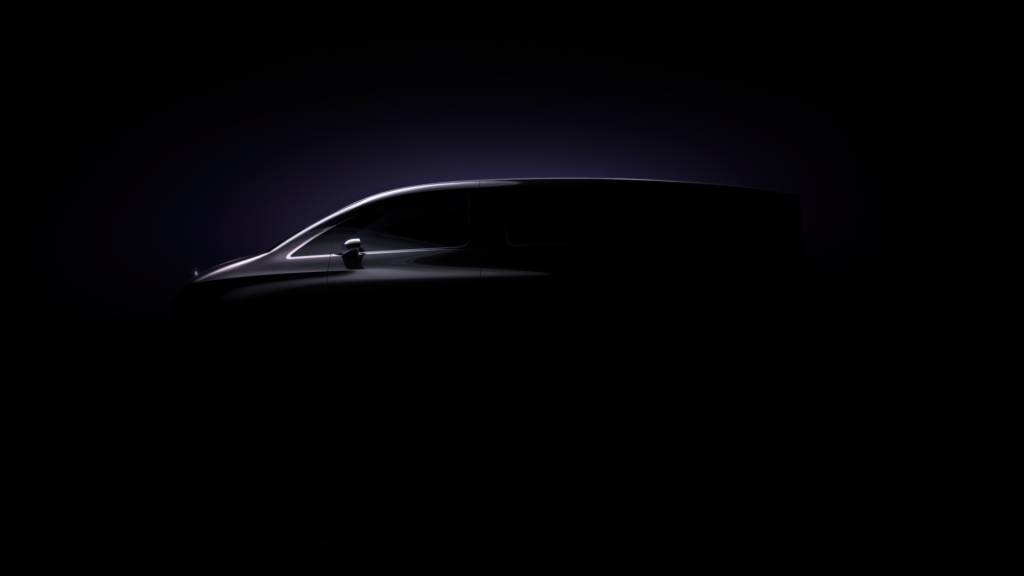
Teaser for Mercedes-Benz Van.EA concept
This wouldn’t be the first time that Mercedes has made has changed course on electric vans. It once had a deal with Rivian to make electric vans for Europe, but is now relying solely on the in-house Van.EA platform. A concept vehicle based on that platform will debut this spring, heralding production models that will arrive next year.
Meanwhile, the current Mercedes-Benz eSprinter is built on the same chassis as combustion vans. And looking ahead Mercedes appears to be committing to lots of tailpipes and fuel tanks rather than a future of all-electric vans.

Volvo ES90 tech stack to set future for automaker
- ES90 electric sedan will debut the most powerful computing capacity ever in a Volvo
- EX90 electric SUV will gain the same processing upgrade, be upgraded to it as a retrofit
- Will support AI-based features, more efficient battery management
Volvo’s next electric vehicle will build on the automaker’s recently-introduced tech stack with even more powerful computing hardware, the company revealed Wednesday.
The Volvo ES90 sedan was first teased last fall and will be fully revealed Mar. 5. Ahead of that reveal, it’s provided some detail on the ES90’s underlying tech, which the automaker promises will be a step up from what’s already installed in current models.
The ES90 will feature Nvidia’s Drive AGX Orin computing platform, with a capability of around 508 trillion TOPS that will give the sedan the most powerful core computing capacity of any Volvo to date. Volvo claims this computing power is needed to support AI-based features, more sophisticated safety tech, onboard sensors, and a more efficient battery management system.
This new computing hardware will augment Volvo’s Superset tech stack, which was introduced on the EX90 electric SUV—although, as Volvo confirmed to Green Car Reports, the EX90 will also be retrofitted with it, under a timeline and details yet to be confirmed. This streamlined collection of hardware and software is Volvo’s attempt to realize the future of the software-defined vehicle, enabling more software-based features pushed through quicker over-the-air (OTA) updates.
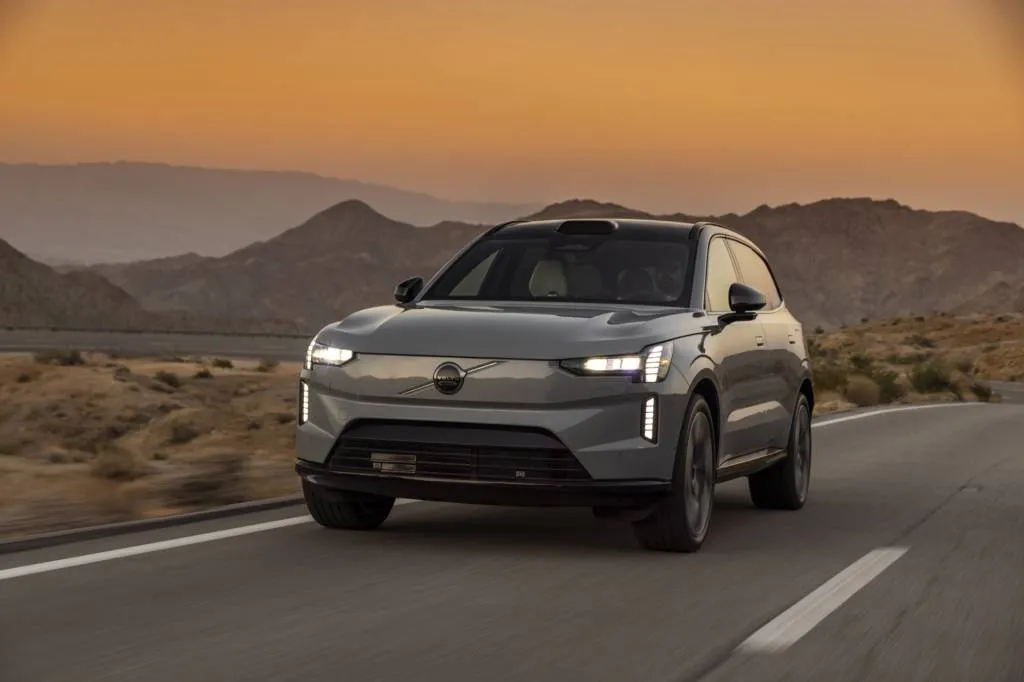
2025 Volvo EX90
The ES90 will also share Volvo’s SPA2 platform with the EX90 and Polestar 3, rather than the next-generation SPA3 scalable architecture arriving in 2026 on an electric alternative to the current Volvo XC60. But the automaker claims to be more interested in software, which it said “now replaces hardware as the primary driver of innovation and value creation for our customers.”
In keeping with Volvo’s traditional emphasis on safety, the ES90 will feature a sensor array consisting of one lidar unit, five radar units, eight cameras, and 12 ultrasonic sensors looking out, as well as “an advanced driver understanding system” looking inward. These will enable driver-assist and safety features to be detailed later.
Volvo’s pivot to software-defined vehicles did not start strongly. After delays due to that all-important software, the EX90 entered production last June, but the first customer cars arrived with a battery drain issue and without some promised features. Volvo also didn’t have a ready use for the EX90’s lidar unit, but perhaps it will find one by the time the ES90 arrives sporting the same sensor.

2025 Rivian California Dune Editions are ready to storm the desert
Rivian on Wednesday unveiled new limited editions of its R1T electric pickup truck and R1S electric SUV inspired by California’s desert dunes.
Available on Tri-motor versions of the 2025 R1T and R1S, the California Dune Edition treatment cloaks the updated electric vehicles in a Desert Storm color palette and adds off-road accessories. Production will be capped at a certain number of each model, but Rivian didn’t have specific numbers available at press time.
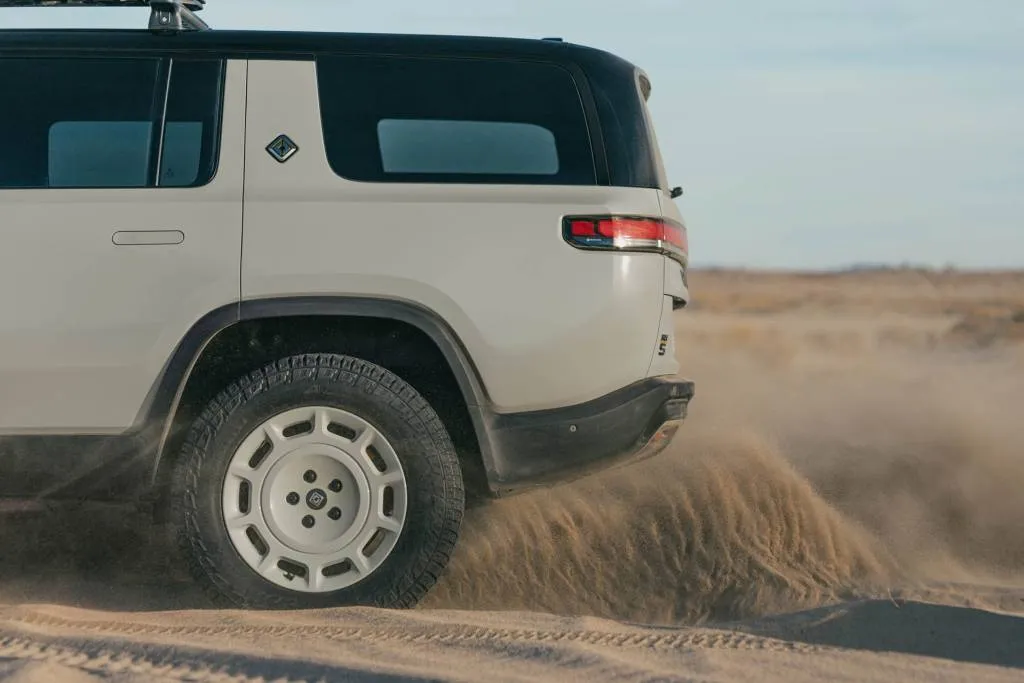
2025 Rivian R1S California Dune Edition
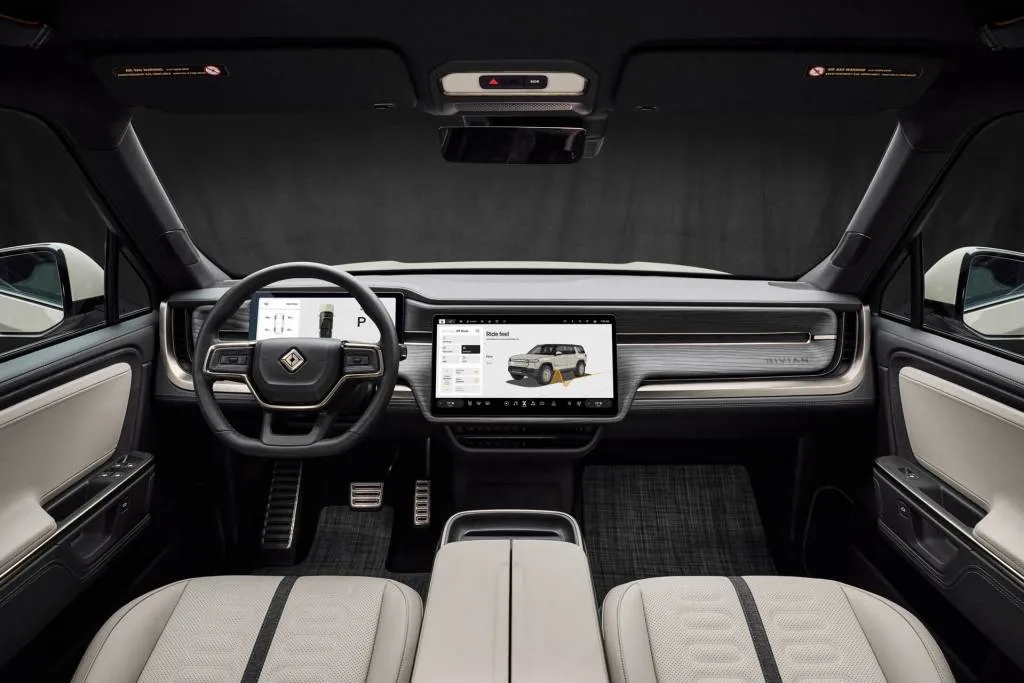
2025 Rivian R1S California Dune Edition
A new paint color, also called California Dune, is contrasted with the darkened badging from the Darkout Package that’s standard on Tri-motor models. The interior features a two-tone arrangement of Sandstone and Black Mountain, with floor material that Rivian promises is easy to clean after a day in the dunes.
California Dune Editions also include the All-Terrain Package, which encompasses reinforced underbody shielding and 20-inch wheels that can either be painted in the same California Dune finish as the rest of the exterior or a dark finish. Off-road recovery boards with mounts, dark-finished cross bars, and a power bed tonneau for the R1T are included as well.
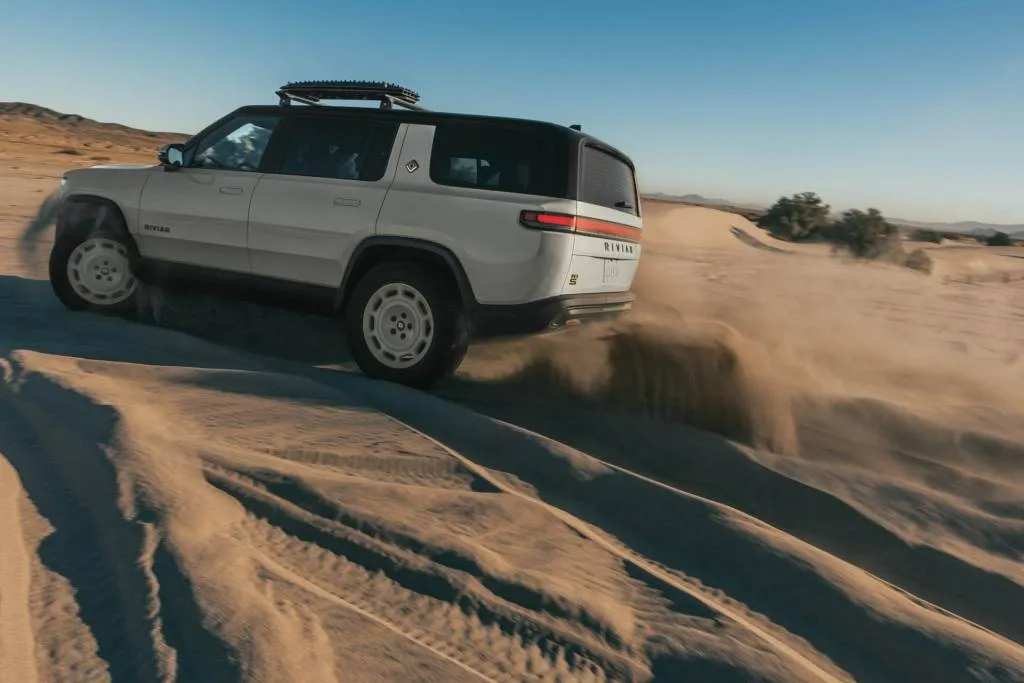
2025 Rivian R1S California Dune Edition
As before, Rivian’s Tri-motor powertrain consists of a single front motor and two rear motors, which together generate 850 hp and 1,103 lb-ft of torque. That will get either the R1T or the R1S from 0-60 mph in 2.9 seconds, according to Rivian.
While the California Dune Edition can only be had with the Tri-motor powertrain, Rivian also offers two- and four-motor configurations—all using the automaker’s in-house designed motor systems and inverter tech for 2025. This headlined a number of changes for the 2025 model year—significant enough that Rivian considers these to be second-generation models—that helped the R1S earn a spot as a Green Car Reports Best Car To Buy 2025 Finalist.
The 2025 Rivian R1T and R1S California Dune Editions are available to order now. Pricing starts at $101,700 for the R1T and $107,700 for the R1S, in both cases with the mandatory $1,800 destination charge included.

Toyota steps in, spends $1.5B for Michigan battery factory with LG
Toyota plans to shift a $1.5 billion order to an LG Energy Solution battery factory in Michigan to help keep it afloat after General Motors backed out of the project, Automotive News reported Wednesday.
Located in the state capital of Lansing, the plant started out as a joint venture between GM and LG. But in December GM said it was selling its stake to the battery maker. That left LG scrambling to find new customers, according to the report, which cites anonymous sources familiar with the matter.
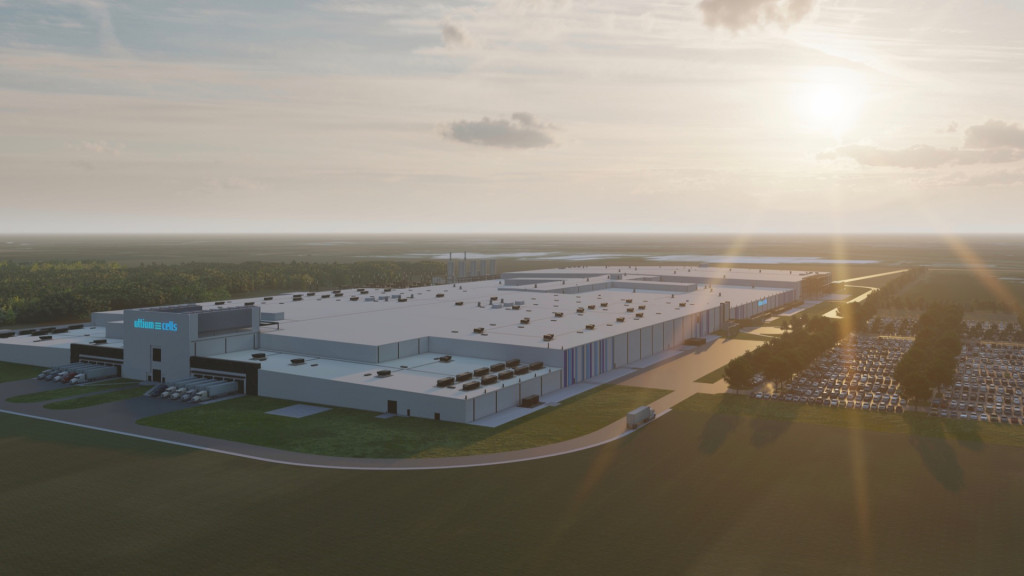
Rendering of planned General Motors Ultium Cells Lansing battery plant
Toyota has now agreed to transfer an existing order from another LG plant in Michigan when LG fully acquires the Lansing factory, which is expected to happen this spring, per the report. The batteries purchased by Toyota under this deal could reportedly be used in hybrids or electric vehicles, and LG is also seeking some energy-storage business for the Lansing factory as well.
The factory was said to cost $2.5 billion when first reported in 2022, with GM and LG splitting that amount. The two companies were also granted $480 million in government incentives for the project, according to Automotive News, which reports that GM is working with the State of Michigan and the Michigan Economic Development Corporation to fully transfer those incentives to LG.
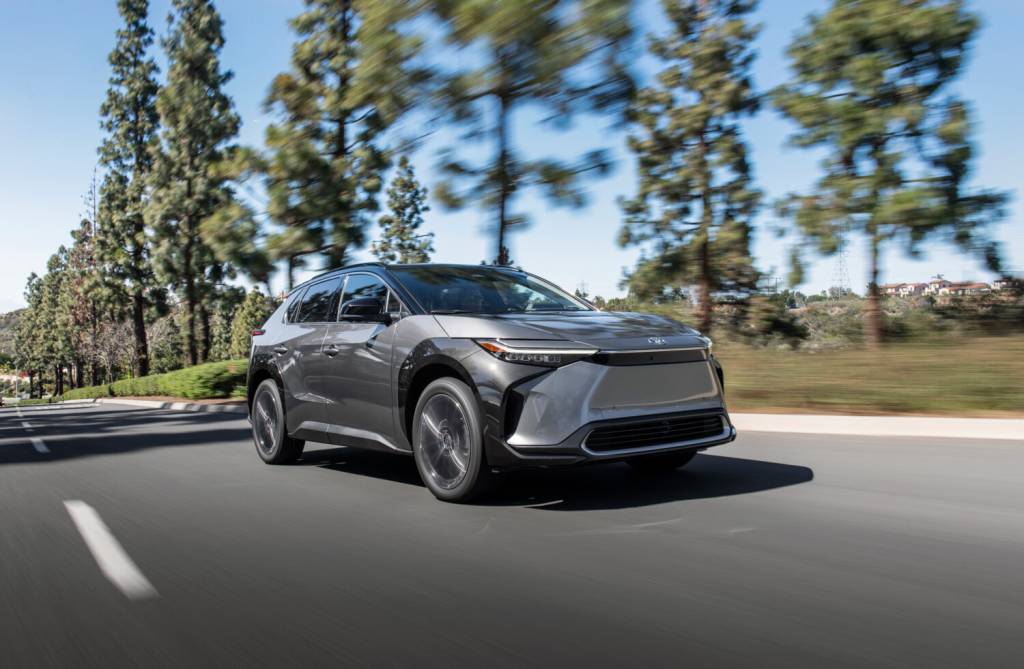
2025 Toyota bZ4X
Toyota said in September of last year that it would ramp up EV production to at least one million units, on a global scale, in 2026. That’s lower than a 1.5-million-unit target the automaker previously discussed, but still represents a nearly tenfold boost from 2023 levels.
In the U.S., Toyota will soon open its own battery factory in North Carolina to boost supply for future hybrids and EVs. But an October 2024 report said a key new all-electric model—a three-row SUV to be assembled in Kentucky—might get delayed from 2025 to 2026. The same report said Toyota canceled plans to manufacture Lexus electric SUVs in the U.S., and that those vehicles would continue to be imported from Japan.

Toyota expects half its new car sales to be electrified in 2025
- More than 50% of U.S. sales in 2025 are likely to be “electrified” (hybrids, PHEVs, and EVs)
- Same exec previously suggested 2025 sales topping 50% from hybrids alone
- North Caroline battery sourcing may help in the electrified push
While it’s still struggling with sales of all-electric vehicles, Toyota has seen substantial growth in hybrids and plug-in hybrids that’s further displacing sales of pure internal-combustion models.
Sales of what Toyota calls “electrified vehicles”—including EVs, hybrids, plug-in hybrids, and hydrogen fuel-cell vehicles—accounted for 43% of the automaker’s U.S. sales volume in 2024, according to Toyota’s annual sales roundup released last month.That’s up from 29% in 2023, according to Toyota sales figures.
That gets even closer to what Toyota’s been expecting: more than 50% hybrid sales in its U.S. lineup. Toyota is expected to top 50% electrified sales (including hybrids, plug-in hybrids, EVs, and hydrogen fuel-cell models) in 2025, as David Crist, Toyota Division group vice president and general manager for North America, recently pointed out to Automotive News.
Crist has made an even more impressive claim in previous interviews from recent months—including to Reuters last August: that hybrids alone will top 50% of its sales.
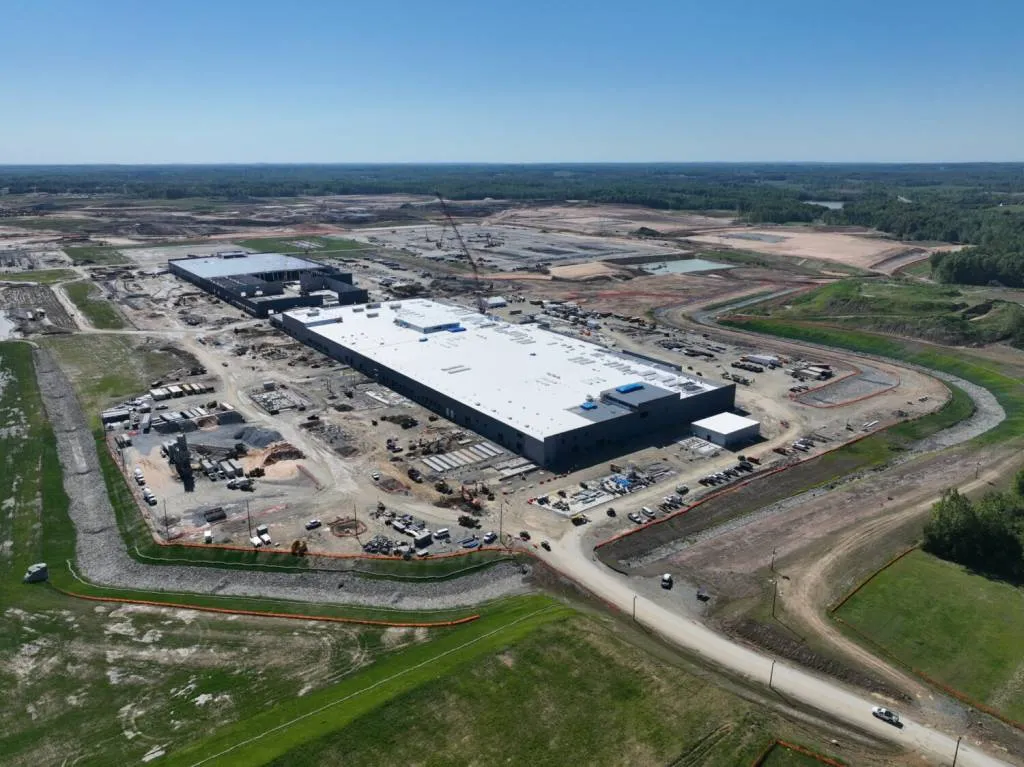
Toyota Greensboro-Randolph Megasite (North Carolina) – under construction
And as Toyota has emphasized for a couple of years, the ratio of hybrids will keep climbing as a new North Carolina battery plant comes online, easing the supply chain.
Toyota announced the North Carolina plant in 2021, saying at the time that it would be ready to build battery cells for hybrids and EVs starting this year. In 2022, still during early days of work on the factory, Toyota announced a $2.5 billion expansion to add EV battery manufacturing capacity. That will help pave the way for more U.S.-market EVs from Toyota, which currently sells only the bZ4X and its luxury-branded Lexus RZ sibling in this market.
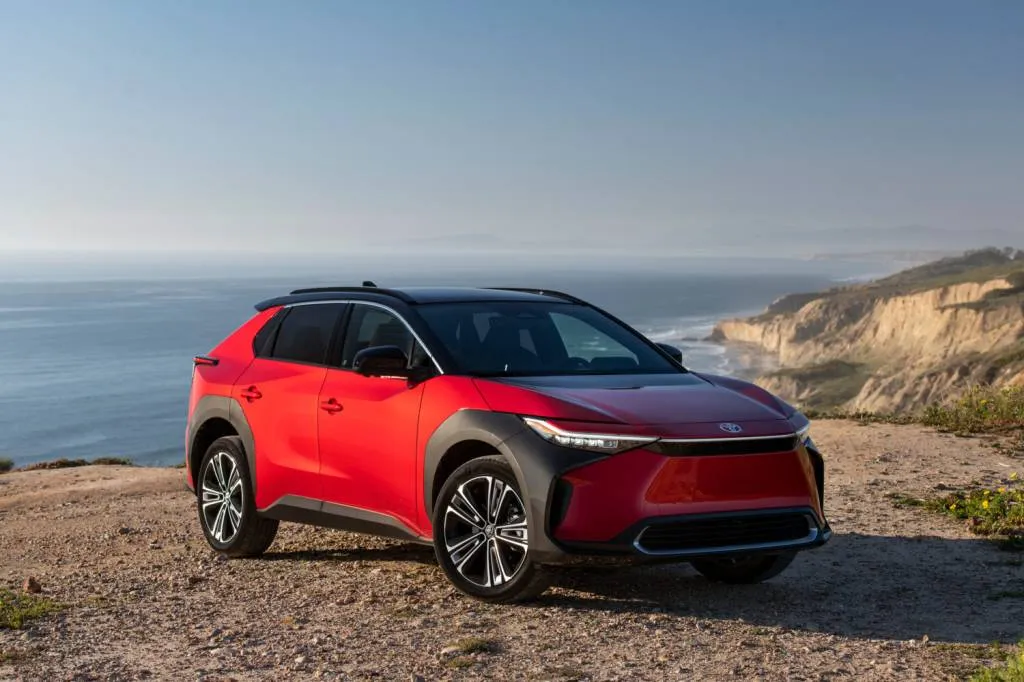
2025 Toyota bZ4X
The North Carolina factory is also expected to supply batteries for a Kentucky-made three-row electric SUV starting in 2026, and Toyota has even debated ending sales of pure internal-combustion cars in the U.S., but hybrids and plug-in hybrids will likely continue to make up the bulk of its “electrified vehicle” sales for the time being.
Nearly every model in Toyota’s U.S. lineup now offers a hybrid powertrain option, and the bread and butter Camry midsize sedan is now sold exclusively as a hybrid. Toyota also sells plug-in hybrid versions of the Prius and RAV4, as well as the Mirai hydrogen fuel-cell vehicle. But sales of that sedan are limited to California, and slow sales forced Toyota to slash its price to around $17,000 in January.
